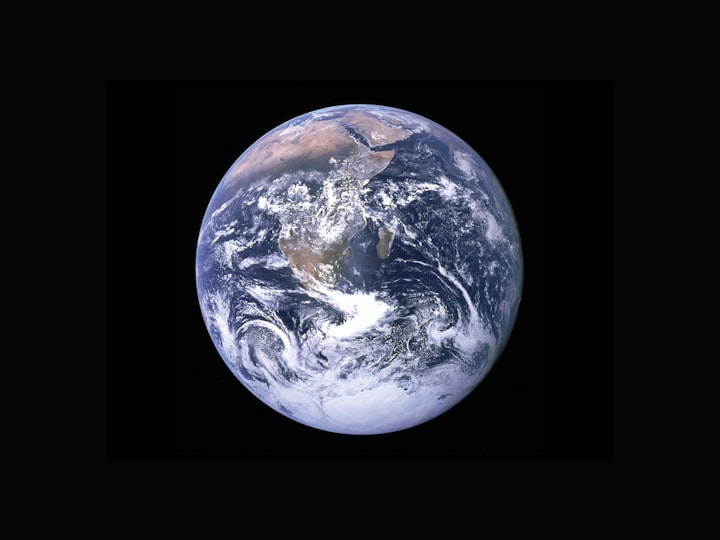The End of Earth: Exploring the Possibilities of Our Planet's Demise
From Cosmic Collisions to Climate Change and Pandemics, What Threatens Our Existence and How Can We Prepare?

The concept of the end of Earth is one that has captivated the human imagination for centuries. Whether it's the result of a natural disaster, human-induced climate change, or a cosmic event, the idea that our planet may one day cease to exist is both intriguing and terrifying.
One of the most popular theories surrounding the end of Earth is the idea of a collision with a large celestial object. This could be an asteroid, a comet, or even another planet. Scientists have found evidence of massive impacts on our planet in the past, and there is a chance that something similar could happen again in the future. If a large object were to hit the Earth, it could cause widespread devastation and potentially even lead to the extinction of all life on the planet.
For example, around 65 million years ago, an asteroid approximately 10 to 15 kilometers wide hit the Earth, leading to the extinction of the dinosaurs and many other species. The impact caused widespread fires and tsunamis and sent massive amounts of dust and debris into the atmosphere, blocking out the Sun's rays and causing a global cooling effect. It is estimated that up to 75% of all species on Earth were wiped out as a result of this event.
However, the chances of such an event happening again in our lifetime are relatively low. Scientists have identified the majority of the largest asteroids and comets in our solar system, and they can track their orbits to determine if they pose a threat to our planet. In addition, space agencies like NASA are actively working on developing technology that can deflect or redirect any potential impactors.
Another theory is that the Sun will eventually reach the end of its life and become a red giant. When this happens, the Sun will expand and swallow up the inner planets, including Earth. This process is still billions of years away, but it is a sobering reminder that nothing in the universe is permanent.
According to current estimates, the Sun has another 5 billion years left in its lifespan. When it runs out of fuel, it will become a red giant and expand, swallowing up Mercury, Venus, and eventually Earth. However, there is still plenty of time for us to develop technologies that can allow us to leave the planet and colonize other worlds before this happens.
Another possibility is that the Earth's magnetic field could reverse. The magnetic field is what protects us from the harmful solar winds and cosmic radiation that constantly bombard our planet. If the magnetic field were to reverse, it would leave us vulnerable to these forces, potentially causing widespread damage to our planet and its inhabitants.
The Earth's magnetic field has reversed many times in its history, with the last reversal occurring around 780,000 years ago. During a magnetic field reversal, the magnetic poles of the Earth switch places, causing the field to weaken and become disorganized. This could lead to an increase in cosmic radiation and a decrease in protection from solar winds, potentially causing damage to our planet's ozone layer and leading to an increase in skin cancer and other diseases.
Climate change is also a concern when it comes to the end of Earth. Human activities such as burning fossil fuels and deforestation have caused the Earth's climate to change rapidly in recent years. If we continue on this path, it could lead to catastrophic consequences for our planet. Rising sea levels, extreme weather events, and food and water shortages could all contribute to the eventual collapse of our civilization.
According to the Intergovernmental Panel on Climate Change (IPCC), the Earth's temperature has already increased by 1.1°C above pre-industrial levels, and the effects of climate change are already being felt around the world. However, there is still time to take action to prevent the worst consequences of climate change from happening. This includes reducing our carbon footprint by transitioning to renewable energy sources, reducing deforestation and promoting reforestation, and developing sustainable agriculture and transportation systems.
Another potential threat to the end of Earth is the possibility of a global pandemic. The COVID-19 pandemic has highlighted how vulnerable our world is to the spread of infectious diseases. If a highly contagious and deadly virus were to emerge, it could have devastating consequences for our planet.
In addition to the loss of life, a global pandemic could disrupt economies and social structures, leading to widespread chaos and instability. This could make it difficult to maintain critical infrastructure and supply chains, which could lead to shortages of food, medicine, and other essential resources.
Fortunately, advances in medical technology and global cooperation have allowed us to develop effective vaccines and treatments for many infectious diseases. However, it is important to remain vigilant and continue to invest in research and preparedness to ensure that we are ready to respond to any future pandemics.
Finally, there is the possibility that human activities could directly lead to the end of Earth. This could include the use of nuclear weapons, the development of dangerous technologies, or the accidental release of deadly pathogens. It is important for us to be responsible stewards of our planet and to take steps to ensure that our actions do not lead to catastrophic consequences.
In conclusion, the end of Earth is a complex and multifaceted issue with many potential causes and consequences. While some scenarios, such as a collision with a large celestial object, are relatively unlikely, others, such as climate change and pandemics, are more immediate threats. It is important for us to remain vigilant and take steps to mitigate these risks to ensure that our planet remains a safe and habitable place for generations to come.
About the Creator
The Truth Speaks
The Truth Speaks is a compassionate and empathetic individual who seeks to understand and support others in their journey towards living a more authentic life.






Comments
There are no comments for this story
Be the first to respond and start the conversation.